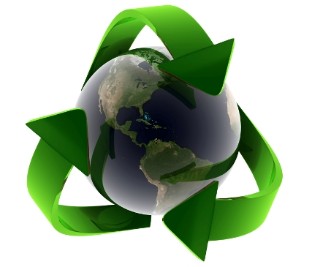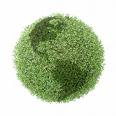Building Environmental Responsibility |
Energy Conservation
|
GreenFiber supports energy conservation programs and collaborates with organizations that work to promote environmentally responsible building practices: the Energy & Environmental Building Association (EEBA), Build a Better Home, Affordable Comfort, Energy Star, Green Building Initiative, and the U.S. Green Building Council. Consumers today demand buildings that are appropriately insulated to provide cost savings associated with heating and cooling. GreenFiber's Cocoon Insulation is an off-the-shelf product that satisfies this consumer requirement. This demand for energy efficiency in buildings is evident in the growing interest in the U.S. Green Building Council's Leadership in Energy and Environmental Design (LEED) building rating system. LEED is a nationally recognized certification program for environmentally responsible building practices. Using GreenFiber's Cocoon Insulation or FRM contributes to LEED certification.
 |
Recycle Content |
EPA's recycled content procurement guidelines state that recycled content is the most recognized environmental feature of building products.
Materials with recycled content have three advantages:
They require fewer natural resources.
They divert materials from the solid waste stream.
They use less energy during manufacturing.
GreenFiber's natural fiber insulation products have all three advantages. Cocoon consists of 85% recycled content with the remaining content consisting of fire retardant and stabilizing additives. Plus, Cocoon carries a Class I/A fire rating.
Based on data from the National Solid Wastes Management Association, recovered newsprint is one of the largest components of the residential waste stream. Insulating a typical 1,500 sq. ft. home with cellulose insulation recovers as much newsprint as an individual will consume in 40 years. If all of
CARBON SEQUESTRATION |  |
Increasing levels of carbon dioxide and other greenhouse gases in the atmosphere have raised worldwide concern regarding climate change. We normally think of forests as the natural "sink" for carbon dioxide. However, wood and paper products also serve to mitigate greenhouse gas emissions. These products offer long-term sequestering of carbon that would normally be released to the atmosphere by the processes of biodegradation or combustion. GreenFiber products interrupt the normal use/disposal/degradation cycle of paper by converting a throwaway product, newspapers into a durable building product that stores carbon for long periods up to 100 years in some structures. GreenFiber's environmental responsibility does not end with delivery of the product. When installed, GreenFiber's products improve the thermal and acoustic environment of a home. From raw material through installation, GreenFiber builds environmental responsibility.
Product Notes:
GreenFiber's family of natural fiber products contain no asbestos, formaldehyde, mineral wool, or fiberglass. Cocoon and FRM are treated with permanent fire retardants to meet and exceed the ICC standards for a Class I/A fire rated building material as tested per ASTME84.
 |
Less Embodied Energy and Waste |
GreenFiber's products require less energy to manufacture than mineral fibers. In fact, GreenFiber's products are produced using ten times less energy than other insulation products.** Cellulose is produced in electrically driven mills that consume relatively little energy when operating, and no energy once the production day ends. Mineral fiber insulation, on the other hand, is produced in gas-fired furnaces that release harmful greenhouse gases and continue to burn day and night regardless of production needs.
Our products also have the advantage of locally available raw materials. From the collection of these materials through the manufacturing process, relatively little "embodied energy," the sum of energy required to obtain materials, manufacture and transport a product is required to manufacture Cocoon and FRM products.
No wastewater, hazardous waste, or toxic air emissions are released during the manufacture of GreenFiber's products. Solid waste generation is minimized - many of the manufacturing byproducts from baling wire to used motor oil are recovered and recycled.
Cocoon and FRM Meet or Exceed Industry Standards for Cellulose Insulation |  |
16 CFR Part 1209 - This Consumer Products Safety Commission (CPSC) safety standard covers four product attributes: settled density, corrosiveness, critical radiant flux (a measure of surface burning), and smoldering combustion.
ASTM Standard C-739 - The industry standard for loose-fill cellulose insulation that covers all factors of CPSC plus four additional characteristics: R-value, moisture absorption, odor, and resistance to fungus growth.
16 Part 460 - This Federal Trade Commission regulation is commonly known as the "R-value Rule." 16 Part 460 eliminates dishonest or misleading insulation marketing claims and ensures publication of accurate R-value and coverage data."
ASTM Standard C-1149 - This is the industry standard for self-supported spray-applied cellulose insulation relating to exposed or wall cavity application. This standard is required by the 16 Part 460 rule as the method to determine density for R-value testing.
State Regulations - The states of
* Projection based on 1.5 million new homes with an average area of 1,500 sq. ft., insulated to R-30 in the attic and R-13 in the sidewalk.
** Comparison based on an R-19 R-value at one square foot coverage area. The embodied energy for different insulation products includes the energy used in both the manufacturing process and in the product itself.
